 W
WAn academic, or scientific genealogy organizes a family tree of scientists and scholars according to mentoring relationships, often in the form of dissertation supervision relationships, and not according to genetic relationships as in conventional genealogy. Since the term academic genealogy has now developed this specific meaning, its additional use to describe a more academic approach to conventional genealogy would be ambiguous, so the description scholarly genealogy is now generally used in the latter context.
 W
WAlchemy is an ancient branch of natural philosophy, a philosophical and protoscientific tradition that was historically practiced in China, India, the Muslim world, and Europe. In its Western form, alchemy is first attested in a number of pseudepigraphical texts written in Greco-Roman Egypt during the first few centuries CE.
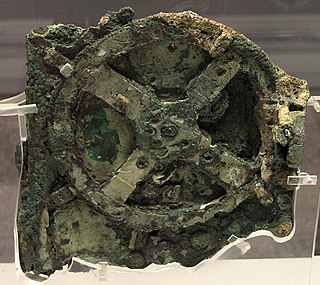 W
WThe Antikythera mechanism is an ancient Greek hand-powered orrery, described as the oldest example of an analogue computer used to predict astronomical positions and eclipses decades in advance. It could also be used to track the four-year cycle of athletic games which was similar to an Olympiad, the cycle of the ancient Olympic Games. This artefact was among wreckage retrieved from a shipwreck off the coast of the Greek island Antikythera in 1901. On 17 May 1902 it was identified as containing a gear by archaeologist Valerios Stais. The device, housed in the remains of a 34 cm × 18 cm × 9 cm wooden box, was found as one lump, later separated into three main fragments which are now divided into 82 separate fragments after conservation efforts. Four of these fragments contain gears, while inscriptions are found on many others. The largest gear is approximately 13 centimetres (5.1 in) in diameter and originally had 223 teeth. In 2008, a team led by Mike Edmunds and Tony Freeth at Cardiff University used modern computer x-ray tomography and high resolution surface scanning to image inside fragments of the crust-encased mechanism and read the faintest inscriptions that once covered the outer casing of the machine. This suggests it had 37 meshing bronze gears enabling it to follow the movements of the Moon and the Sun through the zodiac, to predict eclipses and to model the irregular orbit of the Moon, where the Moon's velocity is higher in its perigee than in its apogee. This motion was studied in the 2nd century BC by astronomer Hipparchus of Rhodes, and it is speculated that he may have been consulted in the machine's construction. There is speculation that a portion of the mechanism is missing and it also calculated the positions of the five classical planets.
 W
WAstrology and astronomy were archaically treated together, and were only gradually separated in Western 17th century philosophy with the rejection of astrology. During the later part of the medieval period, astronomy was treated as the foundation upon which astrology could operate.
 W
WGaston Bachelard was a French philosopher. He made contributions in the fields of poetics and the philosophy of science. To the latter he introduced the concepts of epistemological obstacle and epistemological break. He influenced many subsequent French philosophers, among them Michel Foucault, Louis Althusser, Dominique Lecourt and Jacques Derrida, as well as the sociologists Pierre Bourdieu and Bruno Latour.
 W
WBharat ki Chhap is a 13-episode Indian TV science documentary series chronicling the history of science and technology in India from pre-historic times until the present. It was directed by filmmaker Chandita Mukherjee and funded by the Department of Science and Technology's National Council for Science and Technology Communication (NCSTC) in 1987. It was telecasted on Doordarshan every Sunday Morning. It was introduced by Professor Yash Pal.
 W
WBig science is a term used by scientists and historians of science to describe a series of changes in science which occurred in industrial nations during and after World War II, as scientific progress increasingly came to rely on large-scale projects usually funded by national governments or groups of governments. Individual or small group efforts, or Small Science, are still relevant today as theoretical results by individual authors may have a significant impact, but very often the empirical verification requires experiments using constructions, such as the Large Hadron Collider, costing between $5 and $10 billion.
 W
WThe history of chemistry represents a time span from ancient history to the present. By 1000 BC, civilizations used technologies that would eventually form the basis of the various branches of chemistry. Examples include the discovery of fire, extracting metals from ores, making pottery and glazes, fermenting beer and wine, extracting chemicals from plants for medicine and perfume, rendering fat into soap, making glass, and making alloys like bronze.
 W
WMost sources of knowledge available to early Christians were connected to pagan world-views. There were various opinions on how Christianity should regard pagan learning, which included its ideas about nature. For instance, among early Christian teachers, Tertullian held a generally negative opinion of Greek philosophy, while Origen regarded it much more favorably and required his students to read nearly every work available to them.
 W
WScience in classical antiquity encompasses inquiries into the workings of the world or universe aimed at both practical goals as well as more abstract investigations belonging to natural philosophy. The ancient peoples who are considered today as the first scientists may have thought of themselves as natural philosophers, as practitioners of a skilled profession, or as followers of a religious tradition. Some of these figures include Hippocrates, Aristotle, Euclid, Archimedes, Hipparchus, Galen, and Ptolemy. Their works and commentaries spread throughout the Eastern, Islamic, and Latin worlds and became the wellspring of science.
 W
WA conversazione is a "social gathering [predominantly] held by [a] learned or art society" for conversation and discussion, especially about the arts, literature, medicine, and science.It would not be easy to devise a happier way [than the conversazione] of bringing novelties at once under practical criticism—of making the outliers of science acquainted with the centre, of enabling investigators to compare operations and discuss facts and speculations, and of giving occasion for renewal of intercourse and removal of misunderstandings. …[The] tangible gain to science [from the coversazione is that] inventors and experimentalists … hear [directly] what contemporaries say of their schemes and experiments, and much can be said and done with advantage amid the free talk of a general gathering which could not be permitted in the formal meeting of a scientific society.
 W
WThe doctrine of signatures, dating from the time of Dioscorides and Galen, states that herbs resembling various parts of the body can be used by herbalists to treat ailments of those body parts. A theological justification, as stated by botanists such as William Coles, was that God would have wanted to show men what plants would be useful for.
 W
WWilliam James Durant was an American writer, historian, and philosopher. He became best known for his work The Story of Civilization, 11 volumes written in collaboration with his wife, Ariel Durant, and published between 1935 and 1975. He was earlier noted for The Story of Philosophy (1926), described as "a groundbreaking work that helped to popularize philosophy".
 W
WA Dyson sphere is a hypothetical megastructure that completely encompasses a star and captures a large percentage of its power output. The concept is a thought experiment that attempts to explain how a spacefaring civilization would meet its energy requirements once those requirements exceed what can be generated from the home planet's resources alone. Only a tiny fraction of a star's energy emissions reaches the surface of any orbiting planet. Building structures encircling a star would enable a civilization to harvest far more energy.
 W
WJulian Huxley used the phrase “the eclipse of Darwinism” to describe the state of affairs prior to what he called the modern synthesis, when evolution was widely accepted in scientific circles but relatively few biologists believed that natural selection was its primary mechanism. Historians of science such as Peter J. Bowler have used the same phrase as a label for the period within the history of evolutionary thought from the 1880s to around 1920, when alternatives to natural selection were developed and explored—as many biologists considered natural selection to have been a wrong guess on Charles Darwin's part, or at least as of relatively minor importance. An alternative term, the interphase of Darwinism, has been proposed to avoid the largely incorrect implication that the putative eclipse was preceded by a period of vigorous Darwinian research.
 W
WThe Eddington experiment was an observational test of General Relativity, organised by the British astronomers Frank Watson Dyson and Arthur Stanley Eddington in 1919. The observations were of the total solar eclipse of 29 May 1919 and were carried out by two expeditions, one to the West African island of Príncipe, and the other to the Brazilian town of Sobral. The aim of the expeditions was to measure the gravitational deflection of starlight passing near the Sun. The value of this deflection had been predicted by Albert Einstein in a 1911 paper, and was one of the tests proposed for his 1915 theory of General Relativity. Following the return of the expeditions, the results were presented by Eddington to the Royal Society of London, and, after some deliberation, were accepted. Widespread newspaper coverage of the results led to worldwide fame for Einstein and his theories.
 W
WThe word energy derives from Greek ἐνέργεια (energeia), which appears for the first time in the 4th century BCE works of Aristotle.
 W
WThe history of science during the Age of Enlightenment traces developments in science and technology during the Age of Reason, when Enlightenment ideas and ideals were being disseminated across Europe and North America. Generally, the period spans from the final days of the 16th and 17th-century Scientific Revolution until roughly the 19th century, after the French Revolution (1789) and the Napoleonic era (1799–1815). The scientific revolution saw the creation of the first scientific societies, the rise of Copernicanism, and the displacement of Aristotelian natural philosophy and Galen's ancient medical doctrine. By the 18th century, scientific authority began to displace religious authority, and the disciplines of alchemy and astrology lost scientific credibility.
 W
WThe era of European and American voyages of scientific exploration followed the Age of Discovery and were inspired by a new confidence in science and reason that arose in the Age of Enlightenment. Maritime expeditions in the Age of Discovery were a means of expanding colonial empires, establishing new trade routes and extending diplomatic and trade relations to new territories, but with the Enlightenment scientific curiosity became a new motive for exploration to add to the commercial and political ambitions of the past. See also List of Arctic expeditions and List of Antarctic expeditions.
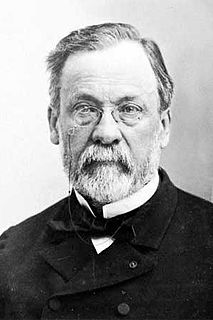 W
WIn biochemistry, fermentation theory refers to the historical study of models of natural fermentation processes, especially alcoholic and lactic acid fermentation. Notable contributors to the theory include Justus Von Liebig and Louis Pasteur, the latter of whom developed a purely microbial basis for the fermentation process based on his experiments. Pasteur's work on fermentation later led to his development of the germ theory of disease, which put the concept of spontaneous generation to rest. Although the fermentation process had been used extensively throughout history prior to the origin of Pasteur's prevailing theories, the underlying biological and chemical processes were not fully understood. In the contemporary, fermentation is used in the production of various alcoholic beverages, foodstuffs, and medications.
 W
WMarsilio Ficino was an Italian scholar and Catholic priest who was one of the most influential humanist philosophers of the early Italian Renaissance. He was an astrologer, a reviver of Neoplatonism in touch with the major academics of his day and the first translator of Plato's complete extant works into Latin. His Florentine Academy, an attempt to revive Plato's Academy, influenced the direction and tenor of the Italian Renaissance and the development of European philosophy.
 W
WNikolai Fyodorovich Fyodorov was a Russian Orthodox Christian philosopher, who was part of the Russian cosmism movement and a precursor of transhumanism. Fyodorov advocated radical life extension, physical immortality and even resurrection of the dead, using scientific methods.
 W
WOktōēchos is the name of the eight mode system used for the composition of religious chant in most Christian churches during the Middle Ages. In a modified form the octoechos is still regarded as the foundation of the tradition of monodic Orthodox chant today.
 W
WJennifer Michael Hecht is a teacher, author, poet, historian, and philosopher. She was an associate professor of history at Nassau Community College (1994-2007) and most recently taught at The New School in New York City.
 W
WHeraclitus of Ephesus was an Ancient Greek, pre-Socratic, Ionian philosopher and a native of the city of Ephesus, which was then part of the Persian Empire.
 W
WHistoria Naturalis Brasiliae, originally written in Latin, is the first scientific work on the natural history of Brazil, written by Dutch naturalist Willem Piso and containing research done by the German scientist Georg Marcgraf, published in 1648. The work includes observations made by the German naturalist H. Gralitzio, in addition to humanist Johannes de Laet. It was dedicated to Johan Maurits, Count of Nassau, who was the patron of the project during the period of Dutch rule in Brazil.
 W
WFluorine is a relatively new element in human applications. In ancient times, only minor uses of fluorine-containing minerals existed. The industrial use of fluorite, fluorine's source mineral, was first described by early scientist Georgius Agricola in the 16th century, in the context of smelting. The name "fluorite" derives from Agricola's invented Latin terminology. In the late 18th century, hydrofluoric acid was discovered. By the early 19th century, it was recognized that fluorine was a bound element within compounds, similar to chlorine. Fluorite was determined to be calcium fluoride.
 W
WThe history of the metric system began during the Age of Enlightenment with measures of length and weight derived from nature, along with their decimal multiples and fractions. The system became the standard of France and Europe within half a century. Other measures with unity ratios were added, and the system went on to be adopted across the world.
 W
WThe presence of women in science spans the earliest times of the history of science wherein they have made significant contributions. Historians with an interest in gender and science have researched the scientific endeavors and accomplishments of women, the barriers they have faced, and the strategies implemented to have their work peer-reviewed and accepted in major scientific journals and other publications. The historical, critical, and sociological study of these issues has become an academic discipline in its own right.
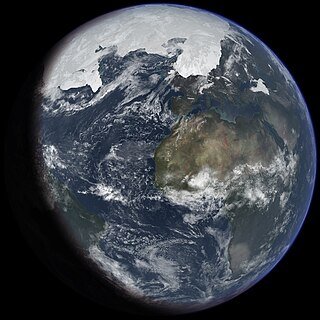 W
WAn ice age is a long period of reduction in the temperature of the Earth's surface and atmosphere, resulting in the presence or expansion of continental and polar ice sheets and alpine glaciers. Earth's climate alternates between ice ages and greenhouse periods, during which there are no glaciers on the planet. Earth is currently in the Quaternary glaciation. Individual pulses of cold climate within an ice age are termed glacial periods, and intermittent warm periods within an ice age are called interglacials or interstadials.
 W
WThe history of metamaterials begins with artificial dielectrics in microwave engineering as it developed just after World War II. Yet, there are seminal explorations of artificial materials for manipulating electromagnetic waves at the end of the 19th century. Hence, the history of metamaterials is essentially a history of developing certain types of manufactured materials, which interact at radio frequency, microwave, and later optical frequencies.
 W
WThe musica universalis, also called music of the spheres or harmony of the spheres, is an ancient philosophical concept that regards proportions in the movements of celestial bodies – the Sun, Moon, and planets – as a form of music. This "music" is not thought to be audible, but rather a harmonic, mathematical or religious resonance. The idea continued to appeal to scholars until the end of the Renaissance, influencing many schools of thought, including humanists. Further scientific exploration discovered orbital resonance in specific proportions in some orbital motion.
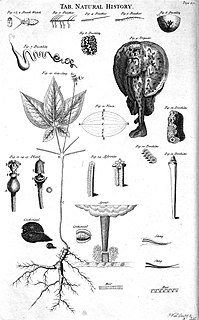 W
WNatural history is a domain of inquiry involving organisms, including animals, fungi, and plants, in their natural environment, leaning more towards observational than experimental methods of study. A person who studies natural history is called a naturalist or natural historian.
 W
WNatural philosophy or philosophy of nature was the philosophical study of nature and the physical universe that was dominant before the development of modern science. It is considered to be the precursor of natural science.
 W
WNeurotree is a web-based database for the academic genealogy of neuroscientists. It was established in 2005. Soon after, Academic Family Tree began, incorporating Neurotree and academic genealogies of other scholarly disciplines.
 W
WOccam's razor, Ockham's razor, Ocham's razor, or the principle of parsimony or law of parsimony is the problem-solving principle that "entities should not be multiplied beyond necessity", sometimes inaccurately paraphrased as "the simplest explanation is usually the best one." The idea is attributed to English Franciscan friar William of Ockham, a scholastic philosopher and theologian who used a preference for simplicity to defend the idea of divine miracles. This philosophical razor advocates that when presented with competing hypotheses about the same prediction, one should select the solution with the fewest assumptions, and that this is not meant to be a way of choosing between hypotheses that make different predictions.
 W
WOld Airport is an area of Doha, Qatar. The district is located close to the site of Doha's old international airport servicing Qatar before the construction of the Hamad International Airport. Running through the district is Al Matar Al Qadeem Street, around which many businesses and retailers cater to the residents of the area. The first mall constructed in Qatar is also located within the district, next to the congested Najma roundabout.
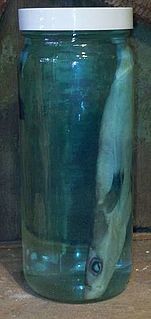 W
W"The Parable of the Sunfish" is an anecdote with which Ezra Pound opens ABC of Reading, a 1934 work of literary criticism. Pound uses this anecdote to emphasize an empirical approach for learning about art, in contrast to relying on commentary rooted in abstraction. While the parable is based on students' recollections of Louis Agassiz's teaching style, Pound's retelling diverges from these sources in several respects. The parable has been used to illustrate the benefits of scientific thinking, but more recent literary criticism has split on whether the parable accurately reflects the scientific process and calls into question Pound's empirical approach to literature.
 W
WPhysica speculatio is a text of scientific character written by Alonso de la Vera Cruz in 1557 in the capital of New Spain. It was the first published work in the American continent that specifically addressed the study of physics, and was written to teach the students of the Real University of Mexico.
 W
WThe Physics is a named text, written in ancient Greek, collated from a collection of surviving manuscripts known as the Corpus Aristotelicum, attributed to the 4th-century BC philosopher Aristotle.
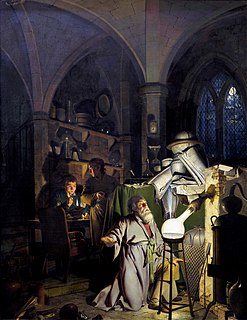 W
WThe history of pseudoscience is the study of pseudoscientific theories over time. A pseudoscience is a set of ideas that presents itself as science, while it does not meet the criteria to properly be called such.
 W
WIn ancient history, the concepts of chance and randomness were intertwined with that of fate. Many ancient peoples threw dice to determine fate, and this later evolved into games of chance. At the same time, most ancient cultures used various methods of divination to attempt to circumvent randomness and fate.
 W
WThe relationship between mathematics and physics has been a subject of study of philosophers, mathematicians and physicists since Antiquity, and more recently also by historians and educators. Generally considered a relationship of great intimacy, mathematics has been described as "an essential tool for physics" and physics has been described as "a rich source of inspiration and insight in mathematics".
 W
WThe relationship between religion and science involves discussions that interconnect the study of the natural world, history, philosophy and theology.
 W
WDuring the Renaissance, great advances occurred in geography, astronomy, chemistry, physics, mathematics, manufacturing, anatomy and engineering. The collection of ancient scientific texts began in earnest at the start of the 15th century and continued up to the Fall of Constantinople in 1453, and the invention of printing democratized learning and allowed a faster propagation of new ideas. Nevertheless, some have seen the Renaissance, at least in its initial period, as one of scientific backwardness. Historians like George Sarton and Lynn Thorndike criticized how the Renaissance affected science, arguing that progress was slowed for some amount of time. Humanists favored human-centered subjects like politics and history over study of natural philosophy or applied mathematics. More recently, however, scholars have acknowledged the positive influence of the Renaissance on mathematics and science, pointing to factors like the rediscovery of lost or obscure texts and the increased emphasis on the study of language and the correct reading of texts.
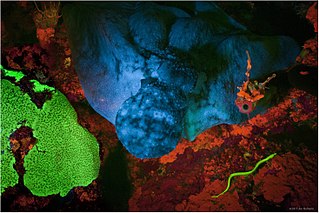 W
WThe role of chance, or "luck", in science comprises all ways in which unexpected discoveries are made.
 W
WBertrand Arthur William Russell, 3rd Earl Russell was a British polymath. As an academic, he worked in philosophy, mathematics, and logic. His work has had a considerable influence on mathematics, logic, set theory, linguistics, artificial intelligence, cognitive science, computer science and various areas of analytic philosophy, especially logic, philosophy of mathematics, philosophy of language, epistemology and metaphysics. Russell was also a public intellectual, historian, social critic, political activist, and Nobel laureate.
 W
WThe history of scholarship is the historical study of fields of study which are not covered by the English term "science", but are covered by, for example, the German term "Wissenschaft". Examples are the history of classical studies, the history of the study of religions, of philosophy, of Biblical studies, of historiography, of the study of music, the study of arts, the study of literature etc. It is a field which has recently undergone a complete renewal and is now a major branch of research. As of 2016, the journal History of Humanities is dedicated to writing the history of scholarship in the humanities as different from the sciences.
 W
WThe Seven Sages or Seven Wise Men was the title given by classical Greek tradition to seven philosophers, statesmen, and law-givers of the 6th century BC who were renowned for their wisdom.
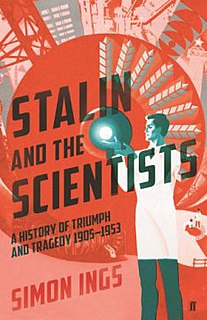 W
WStalin and the Scientists: A History of Triumph and Tragedy 1905–1953 is a 2016 popular science non-fiction book on the history of science in the Soviet Union under Joseph Stalin by English novelist and science writer, Simon Ings. It is Ings' second non-fiction book, the first being The Eye: A Natural History (2007). He had previously published eight novels.
 W
WIn science, a theory is superseded when a scientific consensus once widely accepted it, but current science considers it inadequate, incomplete, or debunked. Such labels do not cover protoscientific or fringe science theories that have never had broad support within the scientific community. Furthermore, superseded or obsolete theories exclude theories that were never widely accepted by the scientific community. Some theories that were only supported under specific political authorities, such as Lysenkoism, may also be described as obsolete or superseded.
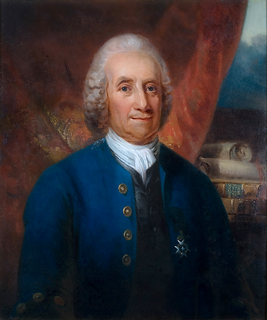 W
WEmanuel Swedenborg was a Swedish pluralistic-Christian theologian, scientist, philosopher and mystic. He became best known for his book on the afterlife, Heaven and Hell (1758).
 W
WTable-turning is a type of séance in which participants sit around a table, place their hands on it, and wait for rotations. The table was purportedly made to serve as a means of communicating with the spirits; the alphabet would be slowly spoken aloud and the table would tilt at the appropriate letter, thus spelling out words and sentences. The process is similar to that of a Ouija board. Scientists and skeptics consider table-turning to be the result of the ideomotor effect, or conscious trickery.
 W
WThe Royal Commission on Animal Magnetism involved two entirely separate and independent French Royal Commissions, each appointed by Louis XVI in 1784, that were conducted simultaneously by a committee composed of five scientists from the Royal Academy of Sciences and four physicians from the Paris Faculty of Medicine , and a second committee composed of five physicians from the Royal Society of Medicine .
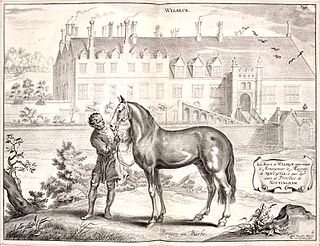 W
WThe Welbeck Academy or Welbeck Circle is a name that has been given to the loose intellectual grouping around William Cavendish, 1st Duke of Newcastle-upon-Tyne in the first half of the 17th century. It takes its name from Welbeck Abbey, a country house in Nottinghamshire that was a Cavendish family seat. Another term used is Newcastle Circle. The geographical connection is, however, more notional than real; and these terms have been regarded also as somewhat misleading. Cavendish was Viscount Mansfield in 1620, and moved up the noble ranks to Duke, step by step; "Newcastle" applies by 1628.
 W
WThe William Phelps Ornithological Collection, also known as the Phelps Ornithological Museum, is a museum of natural sciences dedicated to the study, exhibition and preservation of the birds of Venezuela and the rest of Latin America. The collection is located east of Caracas and in the geographic center of Greater Caracas, in the heart of the Sabana Grande district. The William Phelps ornithological collection is the most important in Latin America and it is also the most important private collection in the world in its research area.
 W
W W
W